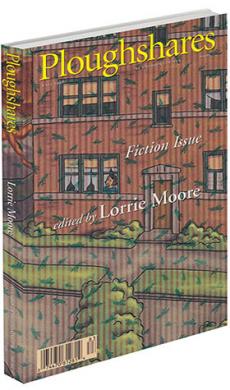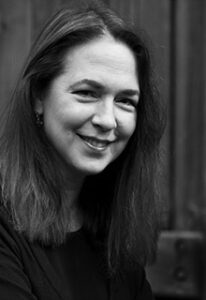rev. of Where She Went by Kate Walbert
Where She Went
Stories by Kate Walbert. Sarabande Books, $19.95 cloth. Reviewed by Don Lee.
Kate Walbert’s first collection,
Where She Went, gives us haunting portraits of two women — a mother and her daughter — both trapped by itinerancy. While Marion Clark, a bride of the fifties, finds nothing but ennui in her many moves across the country, she encourages her daughter, Rebecca, to wander abroad for adventure. Yet, despite their best efforts and hopes, Rebecca arrives at an emotional emptiness remarkably parallel to her mother’s.
Where She Went is divided into two halves, the first devoted to Marion, then Rebecca, going roughly in chronological order. The fourteen pieces that make up the book are more vignettes than stories, largely elliptical and fragmentary in style. Individually, they are not quite complete, but they accumulate in power, Walbert’s prose always lyrical, images and phrases recurring to great effect — for instance, in the description of dusk as
“l’heure bleue,” or the blue hour, “that time of early evening when the world seems trapped in melancholy, and all its regrets for all its mislaid plans for the day are spelled in the fading clouds.”
At twenty, Marion takes the train from Indiana to New York with twelve dollars in her pocket. She gets a job as a secretary at an insurance firm, and, within a year, she meets Robert Clark, an efficiency expert, “a man of routine, precision, a company man.” They marry as virtual strangers — he proposes after three dates — and, to a large degree, they remain strangers over the next thirty-six years, as Marion dutifully packs up the house to follow her husband from one job assignment to another, from the suburbs of Rochester to Norfolk to Baltimore. It is a stultifying existence, but Marion, like most women of her generation, rarely voices dissent, even after falling into deep depression with the loss of her second baby — a sister for Rebecca — to a heart defect. Although Marion privately and repeatedly pledges to leave Robert, she never does. Some of the book’s vignettes are structured as first-person monologues addressed to her daughter, and, in one of them, Marion explains: “We had all abided by some silent
code. We spoke of our children and our husbands and our husbands’ jobs. We played bridge. We got drunk on Friday and Saturday nights at dinner parties.”
On the other hand, Rebecca, when she is twenty, has access to freedoms that would have been unimaginable for her mother. She travels with her college boyfriend to Jamaica, where she dallies into a pointless affair with a resort owner, telling him, “My mother wants me to do everything she never did.” After graduating, Rebecca journeys to Italy and sends postcards to her mother, who wants vicarious reports on “our world tour,” but then she returns to Manhattan and settles into a numbing life of boredom and loneliness. She works as a typist at a newspaper, then edits children’s primers, and lives in a studio apartment in a squalid neighborhood. She reads Neruda, jogs, dates, goes to a synagogue and then a church, looking for “an order, a system.” She saves for another trip to Europe, but, once there, feels disappointed, adrift; she makes up reports of lovers and escapades for her mother.
A few years later, she marries a sculptor from California, but, on their honeymoon in Istanbul, she halfheartedly asks for an annulment: “She has done something terribly wrong, she knows. Something she should repent. But she isn’t sure where to go, whom to pray to, what to say. She hears voices rising in no epiphany, only confusion, repeating Marion’s wishes.” Rebecca, like her mother, is unable to articulate the root of her unhappiness. Travel and marriage have only accentuated the sadness of mislaid, unrealized lives — hers, Marion’s, her sister’s: “in our family she survives, constant in her absence, as if she took with her certain letters from our family alphabet. There are words we can no longer pronounce, gaps within them, whistles, holes that leave us breathless, beached.”

